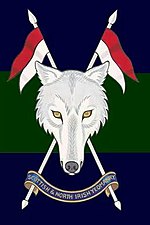
The Royal Armoured Corps is the armoured arm of the British Army, that together with the Household Cavalry provides its armour capability, with vehicles such as the Challenger 2 Tank and the Warrior tracked armoured vehicle. It includes most of the Army's armoured regiments, both the Royal Tank Regiment and those converted from old horse cavalry regiments. Today it comprises twelve regiments, eight regular and four reserve. Although the Household Cavalry Regiment provide an armoured regiment, they are not part of the RAC.

Yeomanry is a designation used by a number of units and sub-units in the British Army Reserve which are descended from volunteer cavalry regiments that now serve in a variety of different roles.

The Royal Scots Dragoon Guards (Carabiniers and Greys) is a cavalry regiment of the British Army, and the senior Scottish regiment. The regiment, through the Royal Scots Greys, is the oldest surviving Cavalry Regiment of the Line in the British Army. The regiment is based at Waterloo Lines, Leuchars Station, as part of 51st Infantry Brigade and Headquarters Scotland, a light adaptable force brigade.
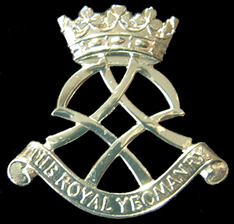
The Royal Yeomanry (RY) is the senior reserve cavalry regiment of the British Army. Equipped with Supacat Jackal variants, their role is to conduct mounted and dismounted formation reconnaissance. The Regimental Headquarters is located in Leicester, with squadrons in Fulham, Nottingham, Dudley, Croydon, Telford, and Leicester. The regiment is part of the Royal Armoured Corps and is only reserve cavalry regiment to resubordinate into regular brigade as part of the Future Soldier Programme, which in turn arose from the Integrated Review of Security, Defence, Development and Foreign Policy published in March 2021.

The Queen's Own Yeomanry (QOY) is one of the Army Reserve light armoured reconnaissance regiments.
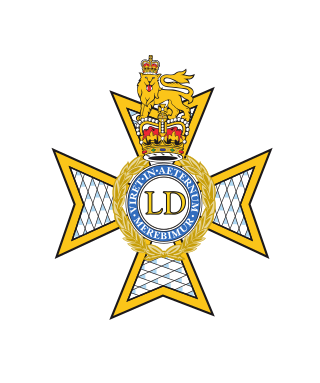
The Light Dragoons (LD) is a cavalry regiment in the British Army. The regiment has a light cavalry role and specialises in mounted and dismounted reconnaissance. The Light Dragoons recruit mainly in Northern England, from County Durham, Northumberland, Tyne and Wear, South Yorkshire and the East Riding of Yorkshire. For this reason, the regiment is known as "England's Northern Cavalry". It is currently based in Catterick Garrison, North Yorkshire.

The Westminster Dragoons (WDs) was a yeomanry regiment of the British Army Army Reserve, located in central London. Its lineage is continued by one of the Royal Yeomanry's six squadrons. Formed in the aftermath of Second Boer War as part of the County of London Yeomanry, the WDs fought in the Battle of Gallipoli and led British forces onto the beaches during the Normandy Invasion in 1944. The squadron most recently saw action on Operation Telic for which it was mobilised for the 2003 war in Iraq.

Redford Cavalry and Infantry Barracks is a military installation located on Colinton Road, near the Edinburgh City Bypass, east of the suburb of Colinton in Edinburgh, Scotland. The barracks are set to close in 2029.

A Scottish regiment is any regiment that at some time in its history has or had a name that referred to Scotland or some part thereof, and adopted items of Scottish dress. These regiments were created after the Acts of Union in 1707 between England and Scotland, either directly serving Britain during its various wars, or as part of the military establishments of Commonwealth countries. Their "Scottishness" is no longer necessarily due to recruitment in Scotland nor any proportion of members of Scottish ancestry.
Precedence is the order in which the various corps of the British Army parade, from right to left, with the unit at the extreme right being highest.

The Essex Yeomanry was a Reserve unit of the British Army that originated in 1797 as local Yeomanry Cavalry Troops in Essex. Reformed after the experience gained in the Second Boer War, it saw active service as cavalry in World War I and as artillery in World War II. Its lineage is maintained by 36 Signal Squadron, part of 71 (Yeomanry) Signal Regiment, Royal Corps of Signals.

The Ayrshire Yeomanry was a Regiment of the British Yeomanry and is now an armoured Squadron of the Scottish and North Irish Yeomanry (SNIY), part of the British Army Reserve. It is the Lowlands of Scotland's only Royal Armoured Corps Unit and has an unbroken history stretching back to the 1790s.

The Fife and Forfar Yeomanry (FFY) was an Armoured Yeomanry Regiment of the British Army formed in 1793. It saw action in the Second Boer War, the First World War and the Second World War. It amalgamated with the Scottish Horse to form the Fife and Forfar Yeomanry/Scottish Horse in 1956. The lineage is maintained by "C" Fife and Forfar Yeomanry/Scottish Horse Squadron of The Scottish and North Irish Yeomanry based in Cupar in Fife.
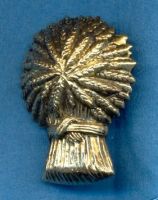
The Lothians and Border Horse was a Yeomanry regiment, part of the British Territorial Army. It was ranked 36th in the Yeomanry order of precedence and was based in the Scottish Lowland area, recruiting in the Lothians – East Lothian (Haddingtonshire), Midlothian (Edinburghshire), and West Lothian (Linlithgowshire) – and along the border with England, particularly Berwickshire. It amalgamated with the Lanarkshire Yeomanry and the Queen's Own Royal Glasgow Yeomanry to form the Queen's Own Lowland Yeomanry in 1956.
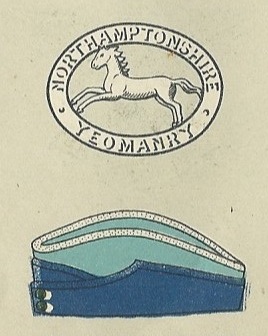
The Northamptonshire Yeomanry was a Yeomanry regiment of the British Army, formed in 1794 as volunteer cavalry. It served in the Second Boer War, the First World War and the Second World War before being reduced to squadron level in 1956. It ceased to have a separate existence in 1971.

The Scottish Yeomanry was a Yeomanry Regiment of the British Territorial Army formed in 1992. It was disbanded in 1999.
During the First World War the British Armed Forces was enlarged to many times its peacetime strength. This was done mainly by adding new battalions to existing regiments. Although sometimes identified by shoulder titles, generally the new battalions could not be identified from appearance. Consequently, the units in this list have been assembled considering only those as having a uniquely different cap badge.

The page contains the current structure of the British Army. The British Army is currently being reorganised to the Future Soldier structure.
